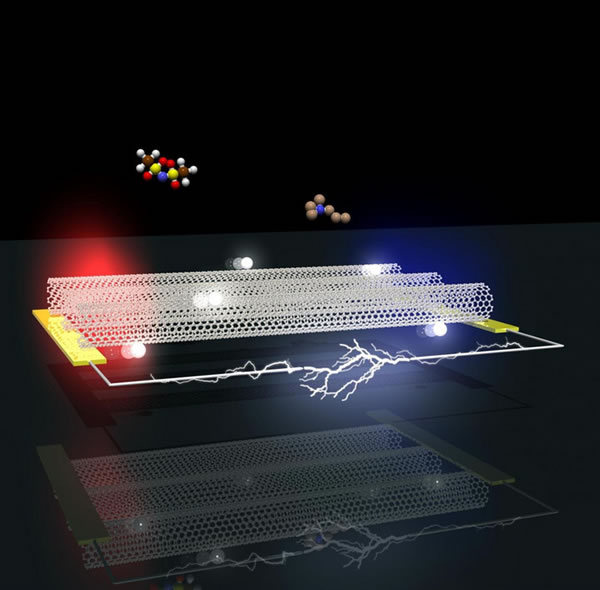According to foreign media reports, Tokyo Metropolitan University (Tokyo Metropolitan University, the school name will be changed to Tokyo Metropolitan University from April 2020) scientists use neatly arranged "metal" carbon nanotube control into a device (thermoelectric device ), Capable of converting thermal energy into electrical energy, and the output power is higher than the device made of pure semiconductor carbon nanotubes (CNT) in the random network. This new device does not need to rebalance the conductivity and voltage of semiconductors, which is much better than similar products, and high-power thermoelectric devices can pave the way for more efficient use of waste heat.

(Source: Capital University Tokyo)
Thermoelectric devices can directly convert thermal energy into electrical energy. In daily life, the exhaust of air conditioners, car engines and even the heat of the body are usually wasted. If such energy can be recovered and used, it is of revolutionary significance. To a certain extent, the development of wearable electronic devices and optoelectronic devices has been promoted. These devices are worn on the skin and are powered by body temperature, such as body heat lamps and smart watches.
When the temperature forms a gradient (with a temperature difference), the power output of the thermoelectric device will be affected by the device's conductivity and Seebeck coefficient (Seebeck coefficient, which represents the voltage generated at a certain temperature difference). The problem is that there is a trade-off relationship between Seebeck coefficient and conductivity. When the conductivity of the device increases, the Seebeck coefficient decreases. In order to generate more energy, these two aspects need to be improved.
Semiconductor materials are generally regarded as the best choice for high-performance thermoelectric devices, but a team led by Professor Kazuhiro Yanagi of Capital University Tokyo chose "metal" CNTs. Unlike pure semiconductor CNTs, the electrical conductivity and Seebeck coefficient of metal CNTs can be enhanced at the same time, thereby breaking the relationship between the two. The team further proved that this unique characteristic stems from the one-dimensional metal electronic structure of the material. In addition, the researchers were able to adjust the direction of the metal CNTs, and the output power was 5 times that of randomly oriented pure semiconductor CNTs.
High-performance thermoelectric elements not only allow people to use their body temperature to power smartphones, they can also be used in biomedicine and play an important role in daily life in the future. (Author: Yuqiu Yun)
1.6 years product warranty (material and workmanship), 25 years module power output warranty
2.Industry leading plus only power tolerance: 0+3%
3.Strong framed module, passing mechanical load test of 5400Pa to withstand heavier snow load 4.17% conversion efficiency,reducing installation costs and maximizing the kwh output per unit area.
Polycrystalline Solar Panel,Poly Panel,Poly Solar Panel
Yangzhou Beyond Solar Energy Co.,Ltd. , https://www.ckbsolar.com